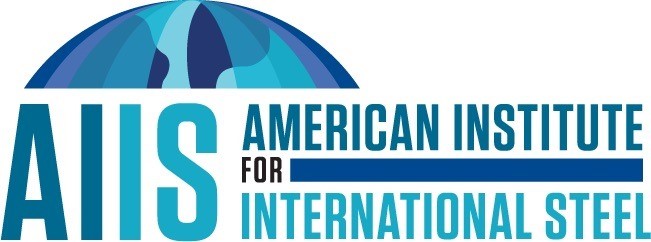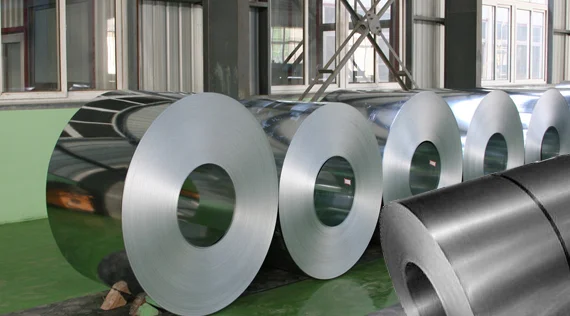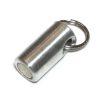AIIS Market Update: May 2018
Steel News | 2018-05-17 07:54:17
However, if this president continues to abandon the principle of competitive advantage and the other fundamentals of economics that underlie free trade, the inflation, lost jobs and lost wealth that result will rightfully be known as the Trump Recession.

SEATTLE (Scrap Monster): Economic growth at the start of 2018 came in at an annualized rate of 2.3 percent, according to an initial estimate from the Bureau of Economic Analysis (BEA), a slowdown from the previous year, but a better performance than had been expected.
Economists had predicted gross domestic product (GDP) growth of 2 percent during the first quarter, which was already well above Q1 growth during the past two years.
“The deceleration in real GDP growth in the first quarter reflected decelerations in [consumer spending], residential fixed investment, exports, and state and local government spending,” the BEA reported. “These movements were partly offset by an upturn in private inventory investment. Imports, which are a subtraction in the calculation of GDP, decelerated.”
The current economic expansion is now at 8 years, 10 months, the second-longest stretch since World War II, trailing only the 1990s boom. However, post-Great Recession growth has been just 2.2 percent, by far the lowest of any of the growth periods and a continuation of a long-term downward trend. Not including recessions, the 1960s expansion was 4.9 percent, but growth periods slowed to 4.3 percent in the 1980s, 3.6 percent in the 1990s and 2.8 percent in the 2000s.
President Trump and congressional Republicans are expecting the tax cuts passed in December to spur additional growth, but there are few signs of an immediate impact on consumer spending, which accounts for about two-thirds of the nation’s economic activity. The BEA noted that consumer spending grew by just 1.1 percent during the quarter, the lowest rate in nearly five years and barely one-fourth of the Q4 2017 rate of 4 percent.
The threat of a trade war also continues to add uncertainty to economic expectations as Trump seeks to raise barriers to imports of steel and other products. A study conducted by the National Retail Federation and the Consumer Technology Association, for example, concluded that Trump’s plan to impose tariffs on certain imports from China in response to alleged intellectual property rights violations “would have significant net negative impacts on the U.S. economy and U.S. employment.” Specifically, the study projected that the tariffs would lead to U.S. economic output being reduced by $3 billion, while 134,000 jobs would be lost.
Gary Cohn, Trump’s former top economic advisor – who resigned from his post just after the president announced his plan to impose 25 percent tariffs on steel and aluminum imports – cautioned recently that, “If we artificially raise the price of goods because of tariffs, we are hurting our service economy,” and “no one wins in a trade war.”
Members of the Federal Reserve Federal Open Market Committee, during a March 20-21 meeting, expressed concern about the impact of trade disputes.
“Participants did not see the steel and aluminum tariffs, by themselves, as likely to have a significant effect on the national economic outlook, but a strong majority of participants viewed the prospect of retaliatory trade actions by other countries, as well as other issues and uncertainties associated with trade policies, as downside risks for the U.S. economy,” according to meeting minutes that were released in April. “Contacts in the agricultural sector reported feeling particularly vulnerable to retaliation.”
At the committee’s next meeting on May 1-2, it left interest rates unchanged, with the target range for the federal funds rate remaining 1.5 to 1.75 percent. A rate hike is expected at the panel’s June 12-13 meeting, however.
The unemployment rate in April fell to 3.9 percent, the first sub-4 percent measure since December 2000. While the economy added 164,000 jobs, much of the decline resulted from the continued drop in the labor force participation rate, which exceeded 66 percent less than 10 years ago but in April was 62.9 percent.
The Conference Board’s Consumer Confidence Index found that “confidence levels remain strong and suggest that the economy will continue expanding at a solid pace in the months ahead,” as the Index rose to 128.7, up from 127 in March. (The Index’s baseline is 100 in 1985.) The University of Michigan’s Index of Consumer Sentiment, though, dipped from 101.4 in March to 98.8 in April. Both measures remain near post-2000 highs.
University of Michigan researchers noted that, “The spontaneous [survey respondent] comments about the tax reform legislation had a positive balance of opinion, but the trade tariffs generated a negative balance of opinion. The difference in the Expectation Index was striking: positive views on tax reform had Index values 28 points higher than those who made no mention of the tax reform legislation, and negative views on tariffs had Index values that were 28 points lower than those who didn’t spontaneously mention trade.”
A survey by the Monmouth University Polling Institute, meanwhile, found that only 12 percent of Americans say they have benefitted a “great deal” from the current economic expansion, while 32 percent say they have received “some” benefits. A majority, however, responded, negatively, saying they have received “not much” benefit (24 percent) or have “not at all” benefitted (29 percent). The numbers are similar to the results in January 2017, just before Trump took office.
A measure of confidence in the manufacturing sector slipped in April, with the Institute for Supply Management’s Purchasing Managers Index coming in at 57.3 following its second straight monthly decline. However, 17 of the 18 industries surveyed reported growth in April, and the chairman of the institute’s Manufacturing Business Survey Committee noted that, “Comments from the panel reflect continued expanding business strength. … Demand remains robust, but the nation’s employment resources and supply chains continue to struggle.”
Housing starts in March rose 1.9 percent from February and 10.9 percent from March 2017, according to the Census Bureau and the Department of Housing and Urban Development. Existing home sales increased 1.1 percent from February to March, the National Association of Realtors reported, but the association’s chief economist noted that, “While the healthy economy is generating sustained interest in buying a home this spring, sales are lagging year ago levels because supply is woefully low and home prices keep climbing above what some would-be buyers can afford.” The median price for an existing home in March was $250,400, a 5.8 percent increase from a year earlier.
Car sales in March were 9.2 percent lower than they were in March 2017, and sales through the first three months of the year were down 10.8 percent, according to Motor Intelligence. Light-duty truck sales, however, increased 16.3 percent for the month and were up 9.8 percent year-to-date.
The Dow Jones Industrial Average closed April at 24,163.15, while the S&P 500 Index ended the month at 2,648.05, both more than 10 percent below their record highs set in January.
On April 30, the dollar was trading at 0.84 euros, 0.74 pounds, 109.68 yen and 6.36 yuan.
If the economy had a foot, President Trump would be aiming a gun at it right now. After a long period of mediocre growth, the United States could soon have its strongest economic stretch in 20 years. That will quickly change, though, if Trump continues to press for trade restrictions that virtually no serious economist supports. All presidents tend to get too much credit and too much blame for the performance of the economy, which, in general, is simply too vast for any one person to have that great of an impact. However, if this president continues to abandon the principle of competitive advantage and the other fundamentals of economics that underlie free trade, the inflation, lost jobs and lost wealth that result will rightfully be known as the Trump Recession.
Courtesy: AIIS
 By
By 



